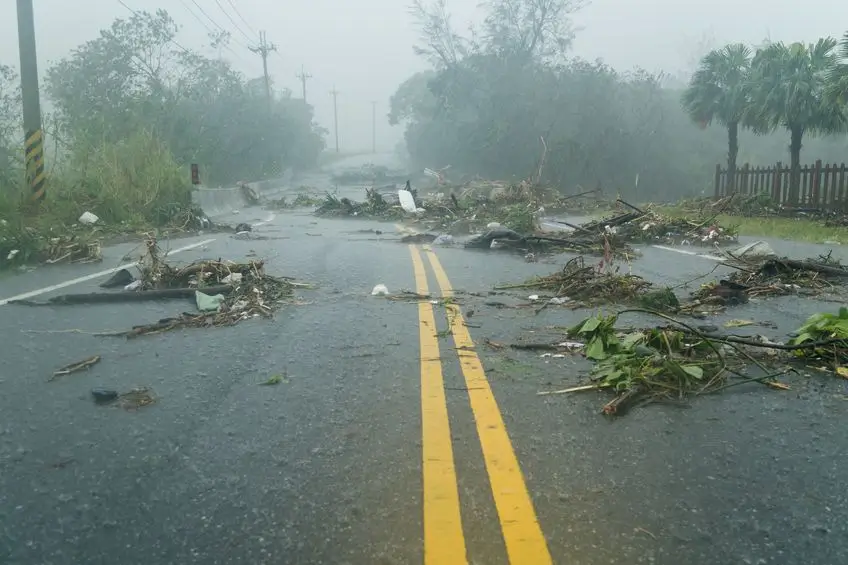Every year between November and April, the coastal regions of Queensland are at risk of being hit by cyclones. A cyclone is a violent storm characterized by high winds rotating around a calm centre that can produce winds in excess of 200 km/h.
These strong winds can cause extensive damage to property and turn debris into dangerous missiles.
Before the cyclone season:
- Check that the walls, roof and eaves of your home are secure.
- Trim treetops and branches well clear of your home (get Council or Body Corporate permission).
- Clear your property of loose material that could blow about and possibly cause injury or damage during extreme winds.
- Know your nearest safe high ground and the safest access route to it incase of flooding.
- Keep a list of emergency phone numbers on display and make yourself known to your neighbours.
Prepare an emergency kit containing:
- A portable battery radio, torch and spare batteries.
- Water containers, dried or canned food and a can opener.
- Matches, fuel lamp, portable stove, cooking gear, eating utensils.
- A first aid kit and manual, masking tape for windows and waterproof bags.
If there is a cyclone – when a cyclone warning is issued:
- Park vehicles under solid shelter (hand brake on).
- Put wooden or plastic outdoor furniture in your pool or inside with other loose items.
- Close shutters or board-up or heavily tape all windows. Draw curtains and lock doors.
- Pack an evacuation kit of warm clothes, essential medications, valuables, important papers, photos and mementos in waterproof bags to be taken with your emergency kit.
- Large/heavy valuables could be protected in a strong cupboard.
- Remain indoors (with your pets). Stay tuned to your local radio/TV for further information.
On warning of local evacuation:
Based on predicted wind speeds and storm surge heights, evacuation may be necessary. Official advice will be given on local radio/TV regarding safe routes and when to move.
- Wear strong shoes (not thongs) and tough clothing for protection.
- Lock doors; turn off power, gas, and water; take your evacuation and emergency kits.
- If evacuating inland (out of town), take pets and leave early to avoid heavy traffic, flooding and wind hazards.
- If evacuating to a public shelter or higher location, follow Police and State/Territory Emergency Services directions.
- If going to a public shelter, take bedding needs and books or games for children.
- Leave pets protected and with food and water.
Tune in, log on, listen out, act:
Tune in:
To your local radio and TV station to listen for warnings and weather updates and local community safety announcements.
Log on:
- To the Bureau of Meteorology ( http://www.bom.gov.au/ ) for weather warnings.
- To the Queensland Disaster Management home page ( http://www.disaster.qld.gov.au/ ) – on this site – for information on disaster events.
- To your Council website ( http://www.qldcouncils.com.au/ ) for local information on the emergency, information on evacuation centres and evacuation routes, information on assistance after a disaster event.
Listen out:
- For the Standard Emergency Warning Signal (SEWS) – the siren sound used at the beginning of serious warnings on radio and television. Pay careful attention to the message that follows SEWS and act immediately on the advice given.
- For Emergency Alert voice messages to your landline and text messages to your mobile telephone.
- For sirens and loud-hailer announcements that Emergency Services may use.
- For Emergency Services personnel who may door-knock your local area to pass on warnings.
Act:
- Act quickly on the advice provided.
- Ensure all householders are aware of the warning and advice provided.
- Check on neighbours and friends who may need special assistance.
- Activate your Emergency Plan and locate your Emergency Kit.
- Activate your evacuation arrangements if required.












